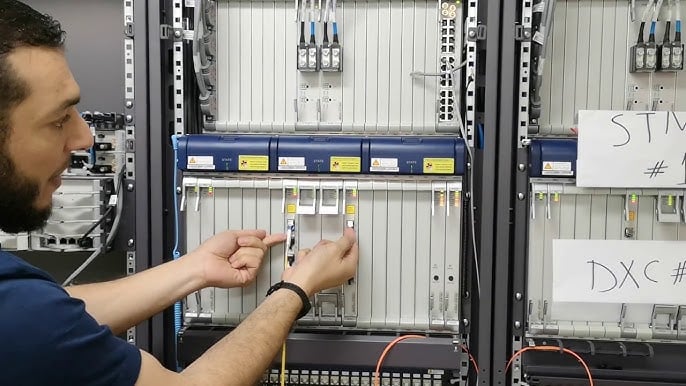What is Synchronous Digital Hierarchy (SDH)?
What is Synchronous Digital Hierarchy (SDH) in Optical Networking?
SDH or Synchronous Digital Hierarchy is a standardized protocol used for transmitting digital signals over optical fiber networks. It is used to transport large amounts of data over long distances, typically in telecommunications and data networking applications. SDH uses a hierarchical structure of multiplexing that allows multiple data streams of different speeds to be combined into a single high-speed stream. While SDH/SONET has been a key technology in the development of modern optical fiber networks, it has largely been superseded by newer technologies such as IP/MPLS (Internet Protocol Multi-Protocol Label Switching).

Functions of SDH
Synchronous Digital Hierarchy is used to combine n signals with a bit rate of b to form data streams with bit rates of (n × b) on the synchronously clocked networks. Unlike PDH, the transmission paths that transfer individually have minimal clock discrepancies. The synchronous mode of operation allows low-order multiplex systems such as communication links for telephone systems, to be inserted in higher hierarchy levels and then removed again via add and drop. SDH has the following Synchronous Transport Modules (STM) and their rates are as follows :
- 1. STM-1 (155 Mbps)
- 2. STM-4 (622 Mbps)
- 3. STM-16 (2.5 Gbps)
- 4. STM-64 (10 Gbps)
What are the key advantages of using SDH technology?
Synchronous Digital Hierarchy is more extensive and less expensive than traditional PDH technologies. Other benefits of using SDH systems include the following:
- It consistently uses more simplified multiplexing and demultiplexing techniques.
- The optical fiber bandwidth can increase without limit.
- It has improved maintenance protocols with easy growth to higher bit rates.
- Rings provide switching protection to data traffic.
- It quickly interconnects with various networks.
- It has a comprehensive network management system.
- It has a flexible self-healing network.
- It can transport existing PDH, broadband, and broadcast signals.
- It continues to remain popular within telecommunications networks and operators.
- It enables rapid recovery from failure.
- It offers network transmission services on local area networks for interactive multimedia, like video conferencing.
- It supports multiple operators or vendors.
- It supports multipoint networking.
Disadvantages of Synchronous Digital Hierarchy
The bandwidth utilization ratio is quite low as compared to PDH because of the OH bytes used for OAM.
- There are various software’s being used so it is more prone to viruses.
- Pointers are being used for the adding or dropping of low rate signals and this causes the circuit to become more complex.
- It requires complicated SDH materials due to a variety of management traffic types.
- It cannot carry E2 due to the unavailability of the container.

Applications of Synchronous Digital Hierarchy
Synchronous Digital Hierarchy (SDH) is widely used in various applications due to its efficiency and reliability. Its ability to handle large volumes of data makes it indispensable in several key areas. Here are some notable applications:
- Telecommunications: Backbone for high-speed data transfer.
- Internet Service Providers: Ensures consistent and scalable bandwidth.
- Enterprise Networks: Supports robust and secure data communication.
Conclusion
In this article, we learned that the SDH (Synchronous Digital Hierarchy) has been a cornerstone of modern telecommunications for decades, providing a robust, scalable, and reliable way to transmit large amounts of data over long distances. It is a synchronized framework and high data throughput, SDH has played a vital role in building global communication networks.